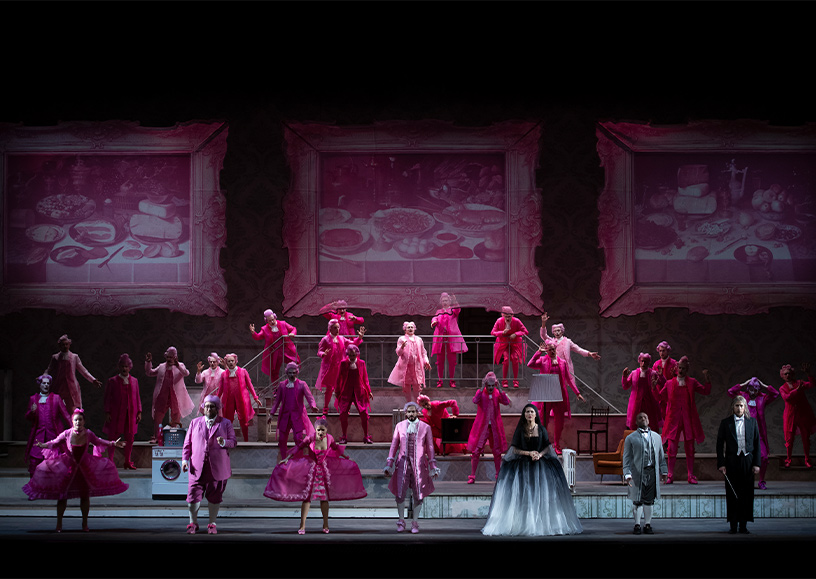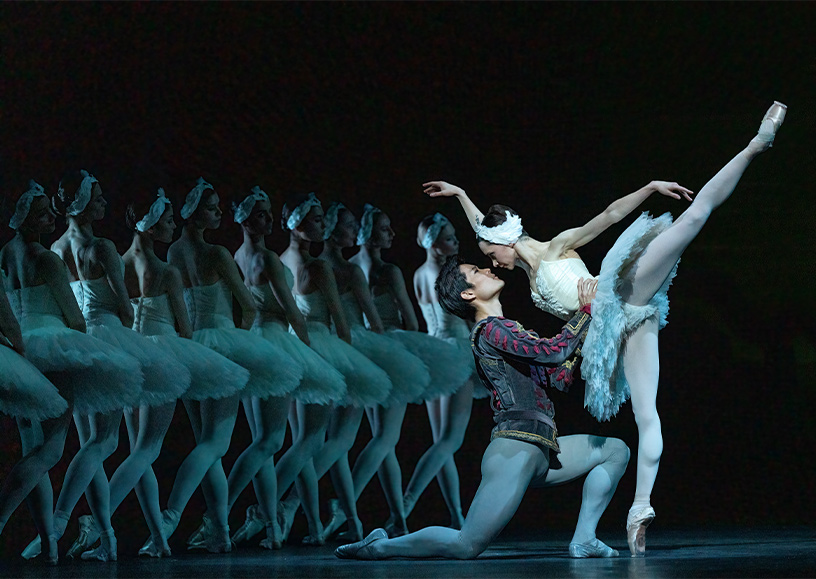
The costume cycle
Dutch National Opera & Ballet (DNO&B) is already in the habit of reusing costumes, but besides recycling, there is more to sustainable costume production. Choice of fabrics, for instance. Although they are still trying to find their sustainable footing, Robby Duiveman (director of the Costume Department/Wigs & Make-up), Lars Willhausen (opera costume supervisor) and Esmeralda Plompen (costume store manager) are committed to going green at work.
Robby Duiveman, director of the Costume Department/Wigs & Make-up: ‘We try to reuse our costumes, or at least sections of them, where we can. That’s easier for contemporary costumes than for historical ones, because period costumes are more recognisable as such. We also keep fabrics that are left over from earlier productions. We ask our costume designers to look at these fabrics first.’
Accessories, shoes and undergarments are always reused. Duiveman: ‘Every chorus member has their own brown lace-up boots, black shoes, sneakers and so on, that they’ll wear for different productions.’
‘We’re still using costumes that were created 40 years ago’
Reusing costumes can still be a challenge, explains opera costume supervisor Lars Willhausen. ‘In opera, singers come in all shapes and sizes. And because their costumes have to be the proper fit, we can’t always avoid creating new pieces.’
The ballet costume department has it easier because of the many revivals in ballet. Classics such as Swan Lake and The Sleeping Beauty are revived in the same production every so many years. And the same costumes are used every time. Duiveman: ‘We’re still using costumes that were created 40 years ago. That tells you something about the quality of the needlework and the fabrics.’

To keep the costumes as pristine as possible, they are treated with the utmost care. Esmeralda Plompen, costume store manager: ‘We have rehearsal costumes for the opera and for the ballet. We use the same costumes for every production. The performers only wear the actual costumes on stage.’
Eco-friendly cleaning products
After the performance, the costumes are cleaned right away, so that they are ready for use the next day. Duiveman: ‘Fake blood is really popular with directors at the moment. We have to remove it right after the performance to prevent it from staining the costumes. We also treat perspiration stains. We clean the inside of the costumes as best we can with soft soap and vodka.’
Once a performance series has ended, the costumes are placed in the ozone cabin before they go into storage. That kills bacteria and eliminates odours (ozone is a degradable gas made up of oxygen molecules, ed.). Duiveman: ‘I’m not a fan of dry cleaning. Dry cleaning is not very eco-friendly and it doesn’t do the costumes much good either.’
‘We’ll have to work on raising awareness among our designers’
Choice of fabrics is an important aspect in the sustainability drive of the costume department. Not every fabric qualifies as sustainable. Willhausen: ‘We still have a ways to go in that respect. That’s why we plan to perform a feasibility study: which fabrics are okay to use and which aren’t?’
Duiveman: ‘A tutu is made of nylon, for instance, because it has to be light-weight. But nylon comes from oil, so its production isn’t very sustainable. Fortunately, tutus have a long life!’
Willhausen: ‘We’ll have to work on raising awareness among our designers because not everyone seems to have got the sustainability memo. We do see, though, that sustainability is definitely an important consideration for young designers.’
Duiveman: ‘We’re mostly learning by doing when it comes to sustainability. We’re figuring out, for instance, how we can create certain shapes with sustainable fabric choices. These pieces can then be used as a basis in other productions. It’s a matter of triggering each other to move forward.’

Costumes that are too specific or have not been used for a while are put up for sale. There is always a lot of interest in them.
Duiveman: ‘That’s no surprise, because our storage is a veritable treasure trove. From the troll costumes used in Der Ring des Nibelungen to fashion designer Jan Taminiau’s costumes for Ritratto. You name it, we have it. We do hold on to the more unique items, such as the dress Eva-Maria Westbroek wore in Lady Macbeth of the Mtsensk District, the production that started her journey to global success. But we also keep costumes that are specific to a certain epoch, for instance because of their shape or cut, or the choice of fabric.’
Costume sale
Plompen: “We zijn nu voor de vierde keer een grote kostuumverkoop aan het voorbereiden. Dat is echt nodig, want de opslag begint vol te raken.”
The sale is much like a big closet clean-out; as soon as you have binned a pair of trousers, they come back in style. Duiveman: ‘That always happens to us too. Just when we’ve sold an item, the designer of the next production is looking for exactly that!”
Text: Anne Havelaar



